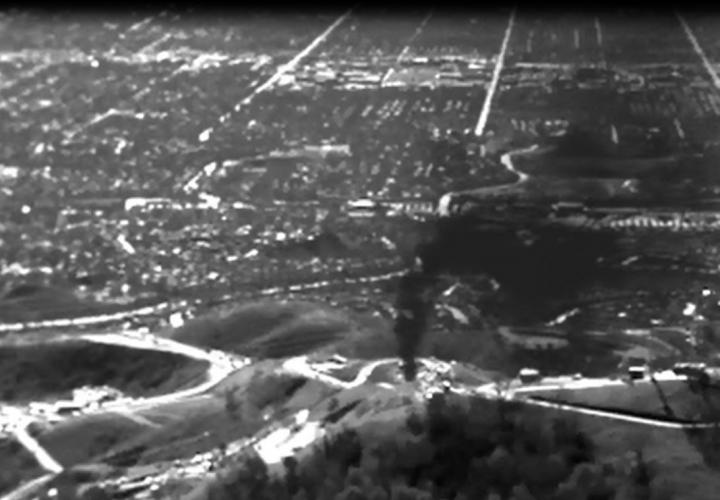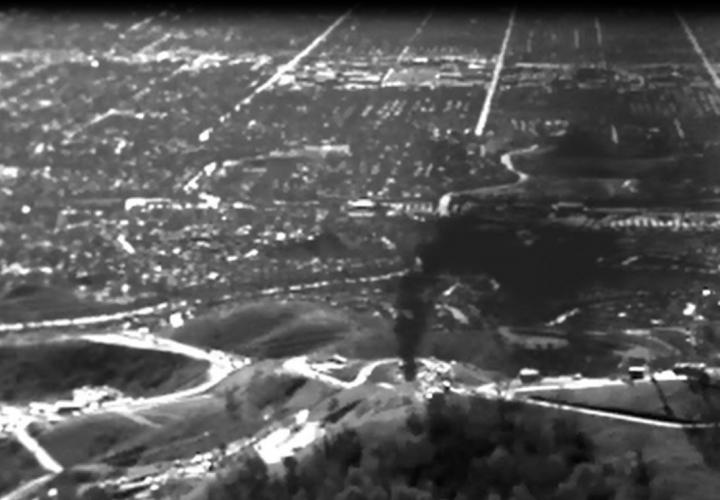
Credit: Environmental Defense Fund
Regulations recently enacted by the U.S. Environmental Protection Agency (EPA) to reduce methane emissions from oil and natural gas production will cost about a third less than what the agency estimates but may not lead to expected leak reductions, according to publicly available data analyzed by Stanford researchers.
The research published online April 18 in Environmental Research Letters evaluated the recently updated EPA 2012 New Source Performance Standards that lay out how methane leaks should be detected and mitigated by the oil and natural gas industry. The research shows that enforcing the standards will cost about 27 percent less than EPA estimates. However, the group also found that methane emissions reductions will likely fall short of the agency's 2025 mitigation targets by 20 to 50 percent, in part due to challenges with the technology used to detect leaks.
"We found out that even if you implement all these regulations as specified, what you achieve in terms of emissions reductions might be less than what the EPA estimates it's going to achieve in terms of targets," said lead author Arvind Ravikumar, a postdoctoral researcher at Stanford's School of Earth, Energy & Environmental Sciences. "One of the reasons it happens is because of uncertainty in both technology used to detect leaks as well as our understanding of leakage."
In their paper, the group made recommendations for how to improve reduction of methane leaks. Despite the president's recent executive order to review the EPA's regulations, the findings may be helpful to state-level regulators and companies developing new technologies to detect leaks in oil and gas operations.
Methane leaks from natural gas operations contribute to rapid global warming while costing millions of dollars in economic loss. Methane is the primary component of natural gas, which is the top source of electricity production in the United States. Even small leaks can have large impacts on the planet: Methane emissions cause about 25 percent of manmade global warming today. Methane leaks can also threaten human health and safety, as shown by the 2015 Aliso Canyon leak in Southern California and multiple recent explosions in New York City caused by leaks in aging natural gas pipes.
"It would be better for everyone if we don't waste gas," Ravikumar said. "About 1 to 2 percent of gas is completely leaked now and fixing it is a direct economic value to both the operators, because they can sell that gas, and to consumers, because ultimately, we pay for it and prices are very volatile."
Federal law requires operators to survey for leaks with a technology called optical gas imaging, or infrared cameras. But the technology's accuracy depends on variables like weather conditions and time of day, making the equipment "notoriously finicky in terms of its performance," said Ravikumar. The EPA estimates a 60 percent reduction in leaks from these periodic surveys, but researchers found the technology to range between 15 and 75 percent effective in actually reducing methane emissions.
The group based their findings on calculations from a software tool they adapted to model costs and benefits of mitigating methane leaks based on publicly available surveys conducted in U.S. natural gas facilities over the last four years.
"We are using this tool to develop a quantitative and statistically supportable approach to evaluating a policy," said study co-author Adam Brandt, an assistant professor of energy resources engineering. "Not only that, because it's open source, anyone can see exactly how the calculations are done, run it themselves and see the effectiveness of a policy."
The EPA regulations the group analyzed impose uniform standards on how often operators must inspect their facilities for leakage, what technology they can use and how soon a problem should be addressed. But given the variability in natural gas facilities, Stanford researchers recommend addressing methane leaks from a regional and holistic perspective, such as coordinating with other greenhouse gas mitigation policies, rather than imposing uniform standards based on national averages.
"These are only recommendations," Ravikumar said. "The methane business itself is fairly new and there are still many unknowns when it comes to methane emissions – given what we know, these ideas seem like the best way forward."
To address the issue of varied results from infrared cameras, Stanford researchers encourage regulators to instead adopt a more technology-agnostic approach. Since the group's software modeling tool was initially released in 2016, several organizations have begun developing alternate ways of detecting methane leaks that may prove more effective.
"Companies are developing detection technologies using our models," said Brandt, who is also a Center Fellow at Stanford's Precourt Institute for Energy and an affiliate at the Stanford Woods Institute for the Environment. "You can start to play with different variables and examine the costs and benefits associated with them."
The researchers also recommend addressing emissions regionally since each basin features unique properties. For example, a possible solution would be indirect mitigation, in which the EPA sets a methane reduction target and then lets operators decide the best approach for reaching it.
"This research is not only applicable to the federal EPA rules – we are also talking with the California Air Resources Board," Ravikumar said. "There's a lot of interest around finding the best way to reduce emissions."
###
Media Contact
Danielle T. Tucker
[email protected]
650-497-9541
@stanfordearth
https://earth.stanford.edu/
############
Story Source: Materials provided by Scienmag





